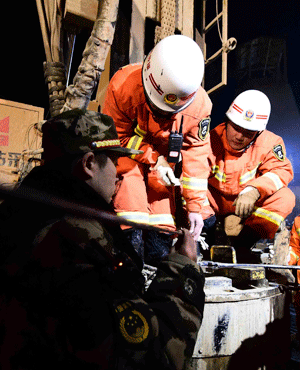
Six mine workers have died at Impala 14 Shaft in less than three months. Four of them died two weeks ago in an underground fire in the mine outside Rustenburg, which workers call “killer shaft”.
The shaft will also be remembered for the 2009 fall-of-ground incident in which nine mine workers were killed.
But Impala Platinum (Implats) downplays its “killer shaft” tag, saying 14 Shaft had gone for two years, since December 13, without a fatal incident until three months ago.
Implats spokesperson Johan Theron said: “There was a fall-of-ground incident in November 2015 at the same shaft, in which one employee was tragically killed. Unfortunately, it is true that there was another fall-of-ground incident at 14 Shaft just before Christmas, in which another employee was tragically killed.
“Before these two unrelated incidents, the Rustenburg mines worked for more than seven months without a fatal accident – this being the longest in the more than 40-year history of the mine without a fatal accident, reaching the lowest fatal accident frequency rate achieved at the mine.”
However, the Association of Mineworkers and Construction Union (Amcu) blames the mine for the accident that claimed the lives of Mosielele Johannes Sesimane (40), Mosala George Moloele (47), Stephen Johnny Kgari (39) and Tshotlego Rantsiripana Moyo (50).
Amcu president Joseph Mathunjwa has queried why workers were allowed to go underground after gas and smoke were detected. Theron said the workers were evacuated soon after the threat was detected, but the four men were missing. Their bodies were discovered later.
Mathunjwa said: “We are also concerned that the workers died while in possession of breathing-aid kits [also known as rescue packs]. Our assessment tells us that these kits are the cheap ones and not effective at all.”
Mine workers say it’s difficult to use the kits in emergencies because the user needs to be relaxed. Theron said Implats had not yet established what went wrong with the devices.
“The fact that all other employees could be safely evacuated from the shaft was greatly assisted by the fact that everyone had these devices available to get them to a place of safety, but unfortunately, for reasons which we hope to learn through the investigation, tragically [the same packs] failed these four employees,” he said.
Spend enough time at 14 Shaft and underground supervisers, who are called miners, will tell you that cost cutting at cash-strapped mines could have something to do with the deaths.
Four miners City Press spoke to – men trained to lead crews of 10 workers and certified to handle explosives – related how mine workers were increasingly being left to their own devices underground.
“This is because there are instances where miners are forced to supervise two or more crews working at places far apart underground. According to our job specification, as a miner you need to be there with your crew at all times so that you can observe their movements and stop them in time if they are making any dangerous moves,” said a miner at Impala.
“There have been incidents where a crew member used a steel rod to force an explosive into a hole drilled in the rock and it exploded in his face, killing him instantly. If a miner was present, he would have stopped him.”
But Impala said it was fine for one miner to supervise more than one team.
“At Impala, more than 96% of our miners supervise only one team. Where a miner looks after two teams, it is done in such a way that he or she can still safely attend to both teams during a shift. Each team would also have an appointed safety representative and team leader, who will take charge during times when the miner attends to other priorities,” Theron explained.
Last week, Mineral Resources Minister Mosebenzi Zwane released last year’s mine health and safety statistics, which he said “saw the lowest fatalities recorded in the mining sector since the start of mining in South Africa”.
According to the report, 77 mine workers died on the job, compared with 84 in 2014.
“This is encouraging and an indication that our combined efforts as stakeholders are bearing fruit,” Zwane said, adding that “we are going in the right direction” towards achieving zero harm in mining.
The Chamber of Mines welcomed the lower statistics, saying it was “gratified to note the continuing improvement in safety performance”, and “as employers, we will continue to work steadfastly with other stakeholders in our quest for zero harm”.
But Mathunjwa said “zero harm” was a “pipe dream”.
“Zero harm will never be realised unless mining companies are held fully accountable for each and every injury and death in the workplace,” he said.




 Publications
Publications
 Partners
Partners








